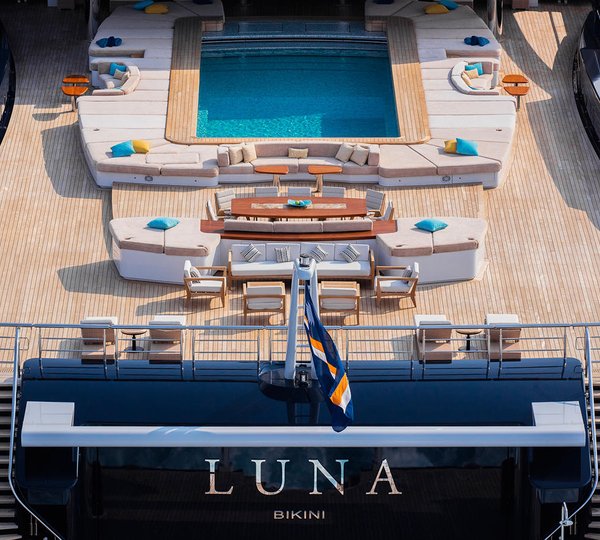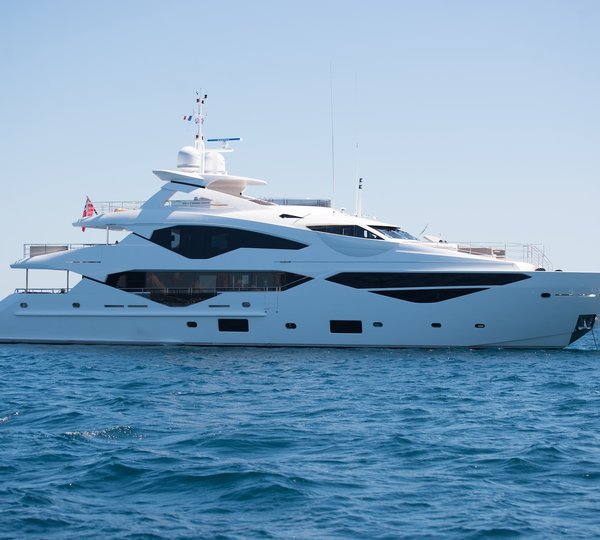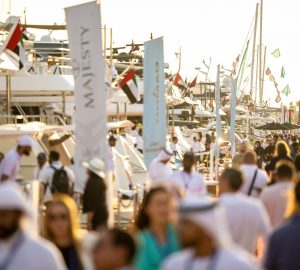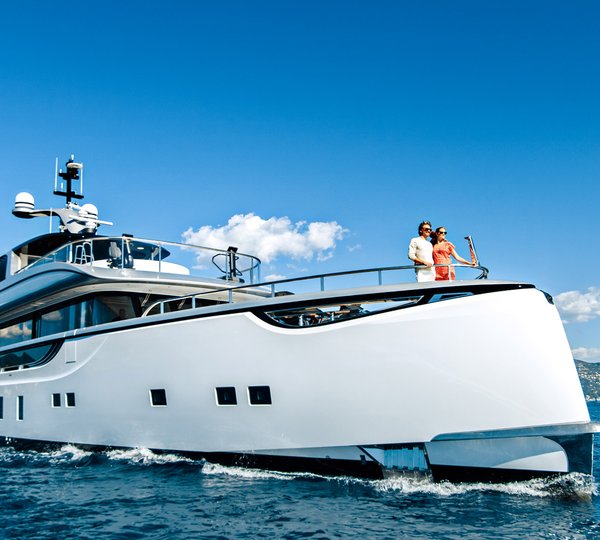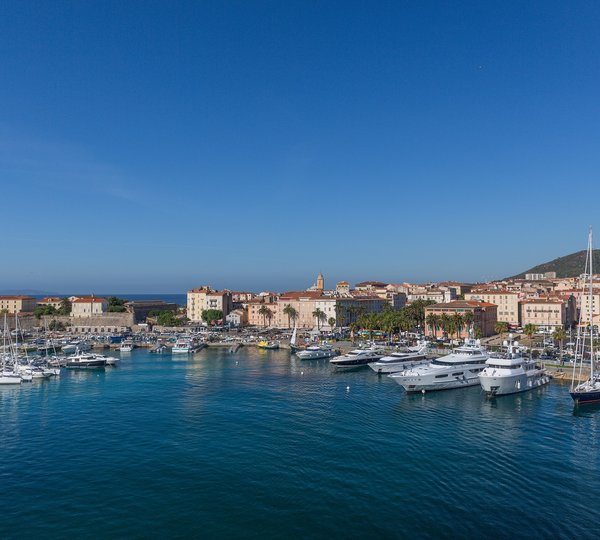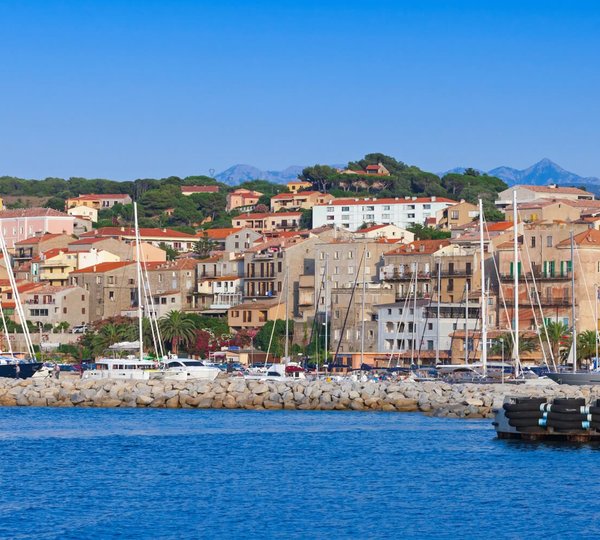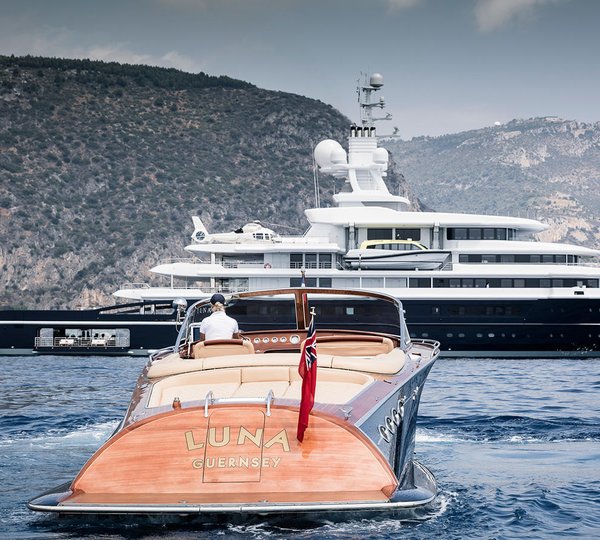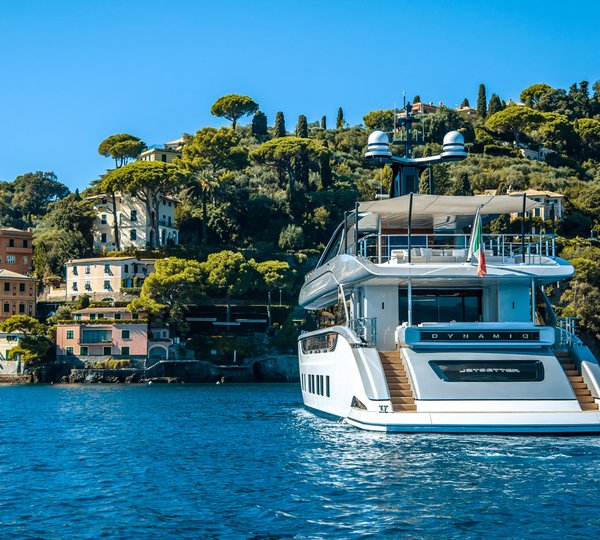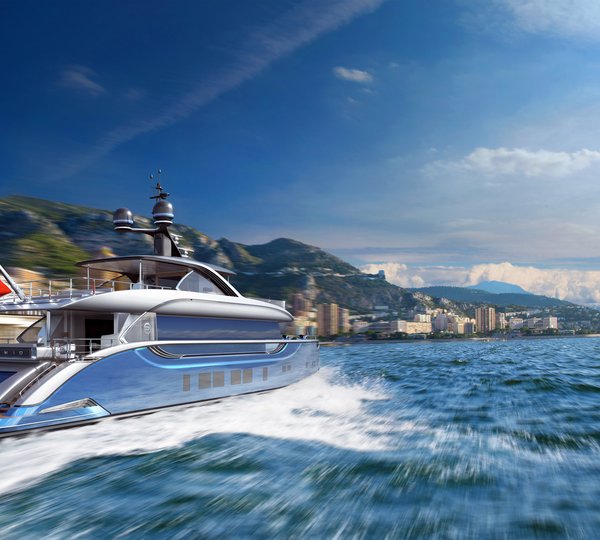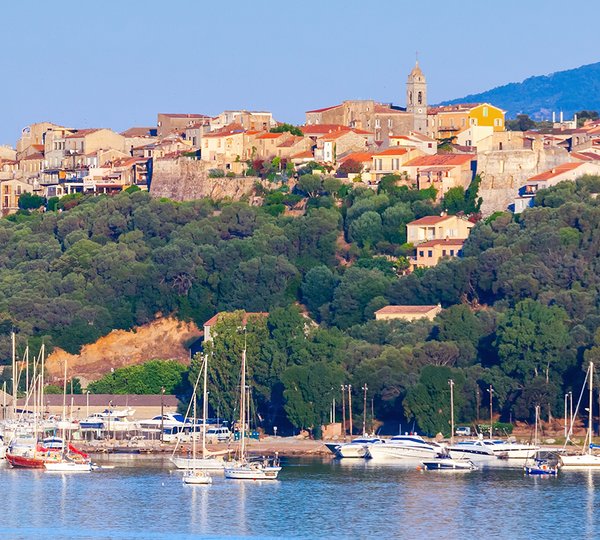Sailing Itinerary for Corsica Yachts
Day 1: Board your luxury charter yacht in Ajaccio at midday and set sail for the Gulf of Porto. This is a UNESCO world heritage site and a place of inspiring beauty where the pink granite rocks plummet into the sea from a height of a thousand metres, one of the natural wonders of Corsica. Return in the evening to the sheltered marina of Ajaccio.
AJACCIO - Leaning at the side of the most beautiful gulf in the world, under the eye of the Iles Sanguinaires, the elegant Ajaccio sits with a nonchalance of charm.
Day 2: Cruise in the yacht south to The Gulf of Valinco. This is another beautiful bay on the west coast, scattered with charming towns such as Cappiciolo which is set on a golden beach. Propriano is the main town in the region and is a fantastic place to visit with its lively port and various good restaurants coupled with its spectacular backdrop.
Day 3: Sail the yacht south to the spectacular town of Bonifacio. Bonifacio sits like a masterpiece in the extreme south and is a unique place of interest. No one can resist the fascination of this old town which is dazzlingly sits perched atop a cliff, nor the appeal of its old alleys which climb up toward the sky. Bonifacio is a town of immense charm and a wonderful place to sample some local cuisine.
Day 4-6: Set sail in your luxury yacht for the Sardinia Islands of La Maddelena. These islands are made up of Budelli, Caprera, Razzoli, Santa Maria, Santo Stefano and Spargi. Spend at least three days exploring these magnificent islands or even move onto to Sardinia to enjoy some glitz and glamour of Costa Esmeralda.
The Maddalena Islands - Sardinia
Crystal clear waters, pink sand, a series of coves and rocks, blue cliffs rising from deep seabeds, intense colours: the Maddalena Islands (Province of Sassari) are a must for whoever wants to discover the beauties of the Sardinian Sea. The islands are located inside the Straits of Bonifacio along the north-eastern coast of Sardinia. La Maddalena Island is surrounded by Budelli, Caprera, Razzoli, Santa Maria, Santo Stefano and Spargi. This group of small granite rock islands has been inhabited since prehistoric times.
The Maddalena islands were known by the Romans as "Cunicularia" and were utilised as a maritime traffic crossing point during the second and first century B.C. This is testified by the remains of a number of old cargo ships that are an interesting destination for today's diving excursion fans. The islands were first the object of a dispute between Pisa and Genova in the XIII century and subsequently were abandoned for a long period before being colonised again by Corsican shepherds and by the first Sardinian settlements in the XVI century. More recently they were used as a naval base and are presently one of the most popular destinations for boating tourists.
Budelli
This is one of Italy's most enchanting beaches and it is famous for its pink sand produced by the coral shattered by the raging sea. Today, it is a highly protected island. Budelli has a nine-kilometers coastline, a surface of 1.74 km2 and is populated by wild rabbits which live principally at its highest point: Monte Budello (88 metres). The best mooring places are the almost deserted little beach of Cala d'Arena (south-eastern point) and the Spiaggia Rosa (Pink Beach). The most beautiful shores are the southern beaches of Cala Piatto and Cala Cisternone, the north-eastern beach of Cala del Cavaliere and the eastern beach of Cala Trana. A low but rich Mediterranean vegetation covers the island. The transparency of its waters and the endless supply of fish and crustaceans hiding in the countless granite ravines make it an excellent destination for underwater photography.
Caprera
This island has been declared a natural reserve for the particular species of seabirds living on it (royal seagull, cormorant and peregrine falcon). The island's name is linked to that of Giuseppe Garibaldi, an Italian patriot and fighter who lived in the XIX century and was one of the fathers of the Italian independence. He bought the island in 1855 and died there in 1882. His house is now a museum and a memorial chapel and the island itself is a national monument.
Caprera is linked to La Maddalena island by a street built on a 600 metres long dam. The island was probably given this name because of the numerous wild goats living on it (Capra means goat in Italian). It is the second largest island and has a surface of 16 km2 and 45 kilometres of coastline. Monte Tejalone is the highest point (212 m). On the south-western side there is a very important sailing centre and the many coves and anchorages which can be found along the coastline make the landing easy. The seabeds are a must both for naturalists and underwater archaeology fans. Many remains of Roman cargo ships as well as of the boat of Garibaldi were found there.
History informs us that after the Roman occupation Caprera remained deserted for centuries before being inhabited by groups of shepherds. Later in 1855 the Hero of the Two worlds (Garibaldi) decided to settle there and lanted the first trees of the blooming pinevood which covers the island today. A century after Garibaldi's death the island was freed from the numerous existing military restrictions and is now completely open to the public.
La Maddalena
La Maddalena is the largest of the La Maddalena Islands. The island has a triangular shape, a surface of 20 km2, nearly 45 kilometres of generally high and jagged coasts and a rich vegetation of berry trees, myrtles and cysts. The diffused reddish colour of the rocks and the soil together with the limpid water create a continuous and fascinating contrast of colours. The highest point of the island is Monte Guardia Vecchia (156 m) which can be reached by a carriage road which offers excellent views.
Razzoli
This is the island closest to Corsica and together with the islands Budelli and Santa Maria it forms the lagoon of Porto Madonna. It has little over 12 kilometres of coastline and a surface of 1.54 km2. The highest point of this pink granite island is Monte Cappello (65 m). The uninhabited island of Razzoli is separated from the island of Santa Maria by the narrow Passo degli Asinelli. This island is fascinating due to its waters abounding in fish and, in particular, due to the many bird species which live undisturbed on the island. Razzoli is the ideal nesting place for Royal seagulls, Sardinian sparrows, cormorants and large shearwaters.
Turtles, dolphins and seals had been living there for a long time before becoming the object of a fierce hunt by fishermen. Only small groups of dolphins can still be seen in the waters around the island. The local lighthouse signals the presence of the group of islands. The jagged coastline of the island forms enchanting coves such as Cala Lunga on the south-western side, which is the only accessible one. Here the sea plays hide-and-seek with the rocks and penetrates into the many small bays such as Cala dei Morti, Cala Calaccia, Cala del Rosario, Cala dell'Acqua and Cala del Bue Marino.
Santa Maria
This island is situated north-west of La Maddalena and is separated from Razzoli by the Passo degli Asinelli and from the island of La Presa by the Passo dello Strangolato. Unlike the other Maddalena Islands, only a very small part of Santa Maria is of granite formation. It has a surface of 2.5 km2 and a 10-kilometre coastline. Wide areas of the island are flat with plants of grapevine. Birds are the real inhabitants of this island; they live in lentisk, myrtle, cyst and rosemary shrubs. The aquatic avifauna living in the pond of Santa Maria is particularly interesting.
Santo Stefano
Santo Stefano has a surface of 3 km2 and lies halfway between the Sardinian coast (one mile from Palau) and La Maddalena, from where the same kind of transportation is available as for the two previous islands. Guests love to visit the bathing establishment of Cala Fumata. The most beautiful panoramic view is from Punta dello Zucchero (101 metres). The island is almost completely uninhabited in winter and it is the only one with traces of prehistoric settlements and stone tools. There is a tourist village close to the beach of Pesce Lungo. For military reasons there is no public access to the western side of the island.
Spargi
It is the third island in size but also the most isolated one along with the small islands of Spargiotto and Spargiottello and the numerous sharp rocks that rise out of the seabed.The wonderful Gala Corsara, Cala d'Alga, Cala Caniccio and Cala Granara have borne the fame won by the island of Spargi after a Roman ship was found in Cala Corsara. The remains of the ship are now visible at the Museum N. Labroglia of La Maddalena. The island is divided into "tanche", which are rectangular portions of land surrounded with stones, used to breed wild livestock. Spargi has no tourist facilities and is seasonally inhabited by shepherds. The highest and most panoramic point is Monte Guardia Preposti (155 metres).
Day 7: Cruise the luxury yacht back to Corsica to the beautiful coastal town of Porto Vecchio. This town presents all the advantages of a seaside resort and shows some wonderful aspects that only its natural environment can reveal. It’s a fun place to spend the night. On the way, stop at San Ciprianu, one of the multitude of small sheltered bays on the south eastern coast of Corsica.
Day 8: Head out early for a final swim off the delightful resort town of Pinarellu with white sands under tall pines and a Genoese tower set on a small inlet. Prepare to disembark your yacht at midday in Porto Vecchio.
Quick Enquiry
Charter Yacht Disclaimer
This document is not contractual. The yacht charters and their particulars displayed in the results above are displayed in good faith and whilst believed to be correct are not guaranteed. CharterWorld Limited does not warrant or assume any legal liability or responsibility for the accuracy, completeness, or usefulness of any information and/or images displayed. All information is subject to change without notice and is without warrantee. A professional CharterWorld yacht charter consultant will discuss each charter during your charter selection process. Starting prices are shown in a range of currencies for a one-week charter, unless otherwise marked. Exact pricing and other details will be confirmed on the particular charter contract. Just follow the "reserve this yacht charter" link for your chosen yacht charter or contact us and someone from the CharterWorld team will be in touch shortly.


